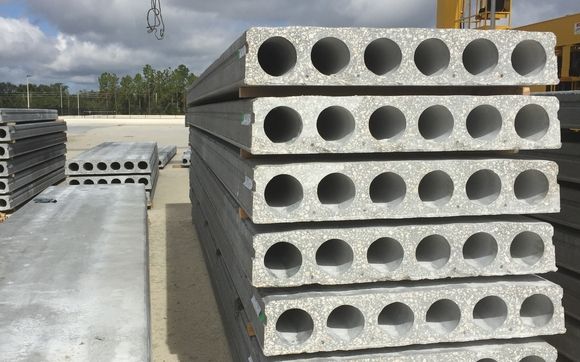
The meter keeps track of how much electricity is used in your household to provide electricity supply. The electricity then travels through wires and switches throughout the house. These wires and switch are the main source of current, which powers your appliances. A typical house has between 200 and 300 outlets and switches.
Distributed power
Distributed energy is the power used for powering homes and buildings. This type of power is generated using different technologies and distributed. The primary distribution voltage ranges between four and 35kV phase to-phase, or 20-kV neutral. Most utility customers are connected with a transformer, which lowers this voltage to lower levels in order to provide lighting and wiring for interiors. There are two basic types of distribution networks: network and radial. Multiple sources of supply can be connected to network distribution systems. Spot networks are used for concentrated loads and radial distribution systems are used in rural areas.

Transmission lines
Transmission lines are the conduit through which electricity flows between a powerhouse and your home. A transmission line typically has three phases each, with its own conductor. Each phase of electricity is carried along a conductor wire. This conductor wire is made up of multiple aluminum-stranded conductors and a steel core. These conductors can be bundled together to increase their capabilities.
Inverters
Inverters are capable of producing an AC signal. They can be used in many ways. They can produce a square or modified sine wave as well as a pulse width modulated signal. A low-pass filter can be created, which allows for the fundamental component of the device to pass but reduces the harmonic component. Common types of inverters produce sine waves or quasi-square waves, and are classified according to their frequency response.
Generators
Generators create electricity by using fuel and are an essential component of every electrical power house. They can be used to power camping equipment, run critical home appliances during an emergency, and more. They come in two main varieties: portable generators for camping and larger standby generators that are installed outside the house. Michael Faraday was the inventor of the first generator, in 1831. Since then technology has greatly improved. There are many types and benefits to generators.
Substations
There are several factors to consider when deciding where to locate substations in an electrical power house. These include location, size, and security. A substation can be on the ground or underground, or it can be inside a special building. Most substations located in urban areas are indoor. This reduces noise from transformers, and protects switchgear against harsh environments.

Electric meter
An electric meter tracks the amount of electricity used. It measures the electricity consumption in watts, kilowatts hours. A watt is the result of a circuit’s voltage and amp. One volt = one amp is the formula that determines a watt. But to accurately measure the energy that is used, we must also take into account the element of time. The unit of measurement that is used to calculate the total electricity used in a home and business is called the watt.
FAQ
What does my SCA cover?
The SCA will provide details about the scope of work needed. These include what time it will take and what materials, equipment, and special permits.
What is a Service Agreement template?
A service contract template is a document that includes all details regarding a service agreement. You can use a service agreement templates to create a standard type of agreement.
Service agreements are essential because they establish the relationship between parties.
They aid in understanding the needs and expectations of both parties. They help both sides understand each other's expectations and needs before signing the deal.
Do I have to sign anything prior to starting work?
Yes, the SCA must be signed in both cases. This means neither party can change their mind later without the other party's consent.
Statistics
- (v) Place or places of performance of the prime contract and first-tier subcontracts estimated at $10 million or more, if known. (acquisition.gov)
- (1) Except as provided in paragraphs (a)(4) and (a)(8) of this section, if the estimated amount of the contract or subcontract is $10 million or more, the contracting officer shall request clearance from the appropriate OFCCP regional office before- (acquisition.gov)
- (ii) Name, address, and telephone number of each proposed first-tier subcontractor with a proposed subcontract estimated at $10 million or more. (acquisition.gov)
- (1) Ascertain the extent to that offers are based on the payment of overtime and shift premiums; and (2) Negotiate contract prices or estimated costs without these premiums or obtain the requirement from other sources. (acquisition.gov)
- (3) The contracting officer may provide for a contract price adjustment based solely on a percentage rate determined by the contracting officer using a published economic indicator incorporated into the solicitation and resulting contract. (acquisition.gov)
External Links
How To
How do you write a simple service agreement?
Contracts should be written in plain English with short sentences and paraphrases. It should include all information relevant, including what the client gets for his/her cash. The price should also be clearly stated at the end of the document.
It is important that the language used is understandable for everyone reading it.
Because they can be hard to read, you should avoid complex words like "and" and "or". Avoid using technical terms, unless they are absolutely necessary.
Make the text easy to follow by using bullet points wherever possible.
Avoid putting too much information in the contract. Only write down what is essential for both parties.
Do not make promises or give guarantees about the performance and quality of the service.
Also, state clearly when the service will start and finish.
The contract should include all details regarding payment.
If the customer has not paid the invoice in full, you must pay him/her the entire amount before you begin work.
All documents related to the contract should be kept in a backup. These documents should be kept safe.
Do not sign anything until you have carefully reviewed it.Do not sign blank forms.Do not sign anything without checking it first.
If you need to add something to the contract, ask the customer for permission before doing so.If you do not ask for their permission, you may be in trouble later.
For future reference, always keep a copy.